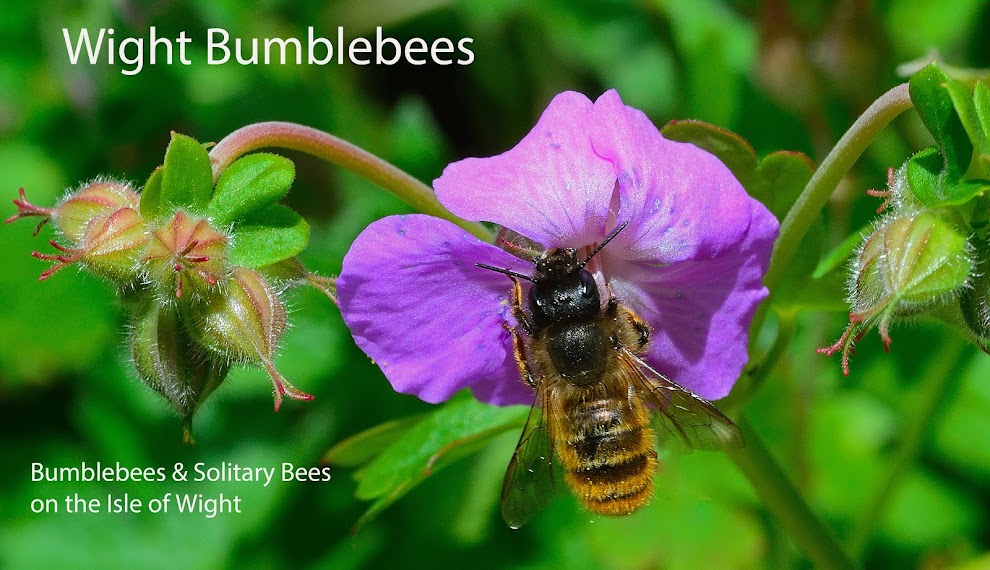Now that the Common Fleabane is as good as over in my local copse,insects and in particular bees are all over the Devil's-bit Scabious flowers.This common plant prefers damp woodland.The flowers are violet,sometimes white and unlike those of the Field and Small Scabious the outer flowers are not noticeably bigger than the inner ones.
Title Photo
A male Red Mason Bee at Freshwater Bay.
Wednesday 24 September 2014
Friday 5 September 2014
Lasioglossum leucozonium.
This small solitary mining bee is widespread in England.They are particularly attracted to yellow flowers as in the following photos where they are feeding on Common Fleabane.However thistles and other plants are frequented.
This species is found mainly in sandy and calcareous areas and the nest is dug by the female in light soil. Although a solitary bee females have been known to construct their nests in the same burrows.
Wednesday 3 September 2014
In my Local Copse.
The warm and sunny weather returned today and many insects were enjoying the drifts of Common Fleabane,Pulicara dysenterica, that are now covering the open paths of my local copse.
The Honeybee,Apis mellifera,in particular, is fond of fleabane and they were out in force collecting 'basket fulls' of pollen.Known as the Western or European Honeybee it is our only native honeybee species.
Several bumblebee species were also out and about including the Red-tailed Bumblebee on Field Scabious and Thistle.The following photographs show a male Red-tailed,Bombus lapidarius.
Subscribe to:
Posts (Atom)















